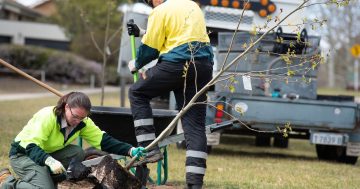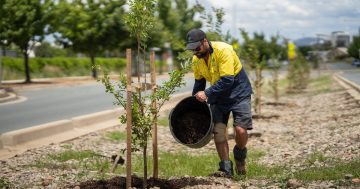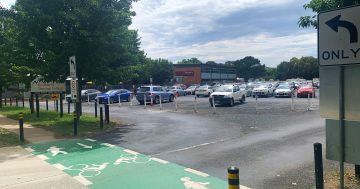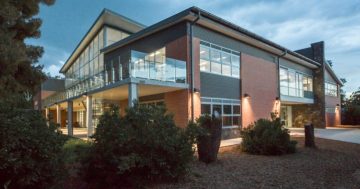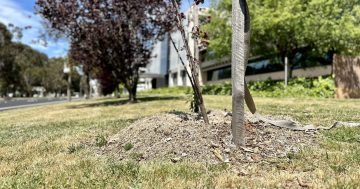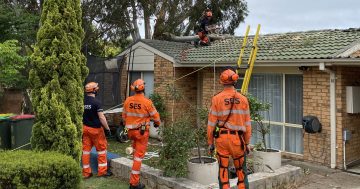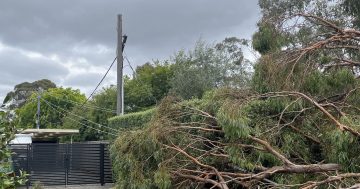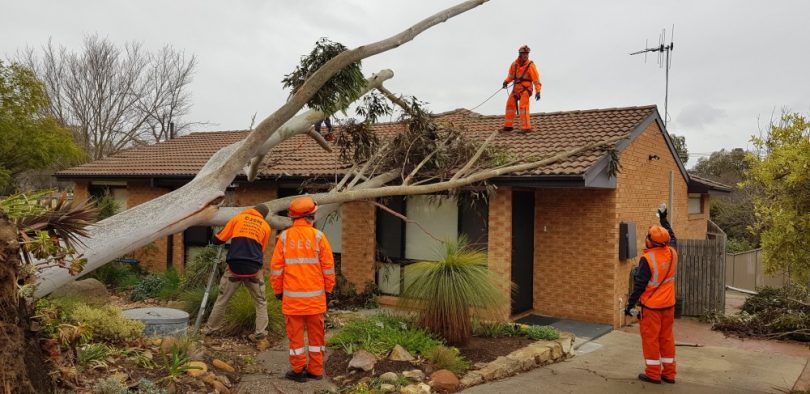
A familiar scene in Canberra this season. Photo: Supplied, ESA.
We all love trees until they fall on a house, car or, God forbid, a person.
This summer’s particularly volatile storm season has laid bare the dark side of living in the bush capital – that every now and then you will not only hear a tree fall in the forest but you might actually be clobbered by one.
In fact, you could call it the ‘summer of the chainsaw’ as State Emergency Service crews answered hundreds of calls.
It has prompted a squall of comments about the usual but by no means only culprit, the eucalypt, which are referred to by some as ‘widow makers’.
But as they make up 60 per cent of the urban forest, it’s probably no surprise that they are the most common tree to be blown over or to lose a branch in a storm, especially if it has been a rainy season or soils are compacted.
It’s been a tough couple of seasons for our City Services (TCCS) agency as it throws all it has and more at the relentless grass threatening to envelop whole suburbs and frantically plants more trees to regenerate the ageing urban forest.
Now it has got some free advice from the ACT Civil and Administrative Tribunal, which dismissed a compensation claim from a motorist whose car crumpled in the face of a flying branch from a large mature tree that has called city car park home for many years.
TCCS may have got off scot-free when it came to paying for any damages, but ACAT said it should be doing more to inspect older trees in high-traffic areas such as car parks to prevent falling limbs making a mess of someone’s car or worse.
Indeed it raised the spectre of a person being injured, finding that the risk was significant.
If the applicant had found an expert to challenge the TCCS’s expert witness, one of its arborists, who told ACAT the fallen branch could not have been reasonably foreseen, the outcome may have been different.
TCCS said it couldn’t possibly inspect every one of the 760,000 trees in its charge, and ACAT agreed, but in well-worn areas, it was a risk it needed to manage.
That is something it should take on board if it wishes to avoid a damages claim next time, especially if the applicant is more tenacious and resourced.
It’s also good advice for property owners who may worry about those great old trees in and around their yards and think the only solution is to take them down.
The ACT Government’s approach to tree management is a conservative one, in that removal is not a first option.
That is a good thing, but TCCS and householders can do their bit to help avoid damage and injury by deploying arborists to identify what attention a tree might need to avoid damage or injury.
Where new trees are planted and selecting appropriate species will also help.
But the only way to avoid any tree from dropping a branch or falling is to not have trees, and that is just not an option, especially when their value, beyond aesthetics and as habitat for birds and animals, will only increase in a warming climate.
Canberra without its urban forest and great trees would be so much the poorer. All we can do is manage the risk the best we can.












